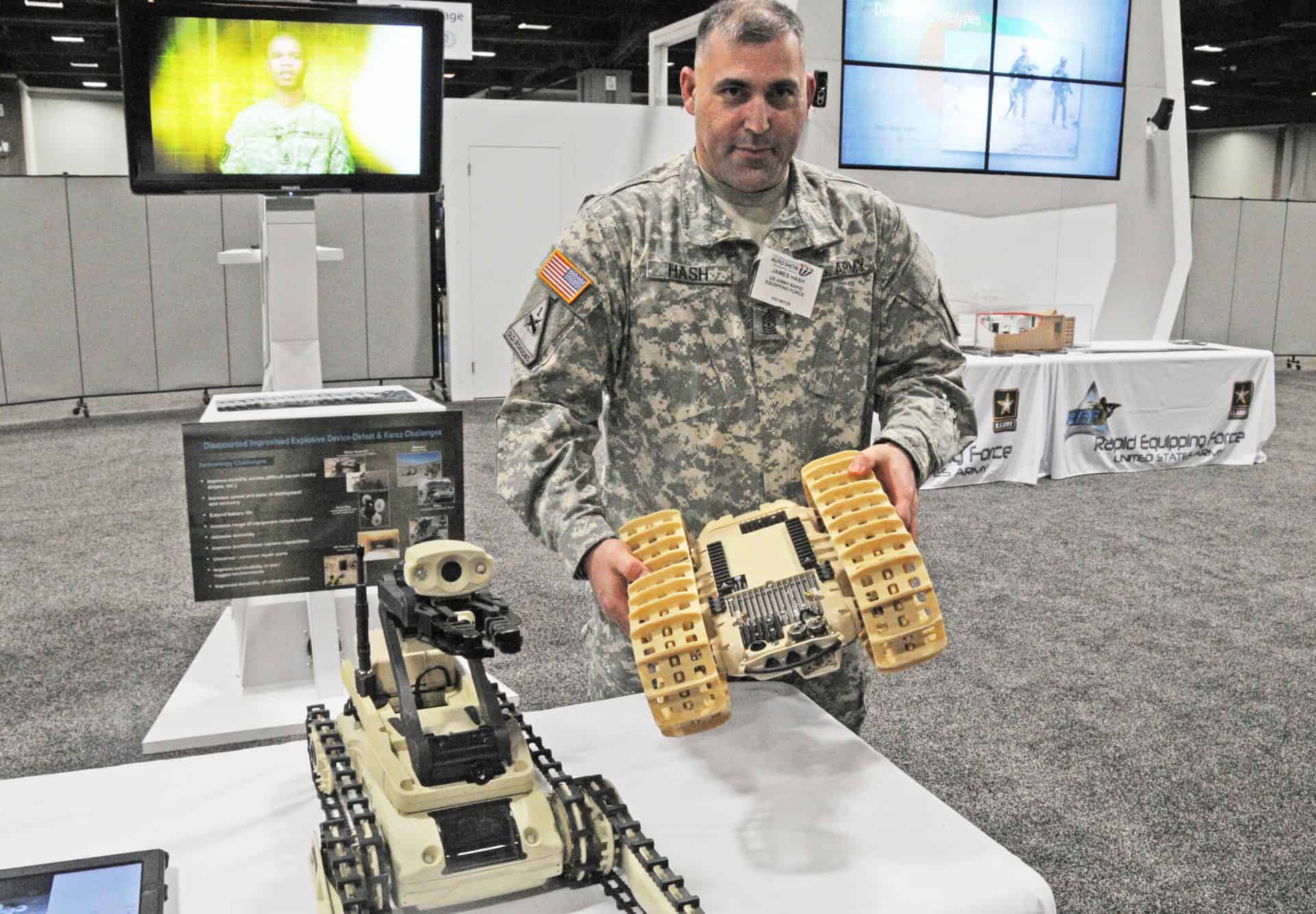During Operation Atlantic Resolve in Europe, Soldiers were tasked to move ammunition around Eastern Europe but lacked sufficient trailers to haul it, said Col. Lanier Ward.
A program manager said more trailers were not budgeted in the Program Objective Memorandum, meaning it would take a while to make it happen. So the rotational brigade combat team turned to the Army’s Rapid Equipping Force, which supplied 30 trailers in no time.
Ward, director of the REF, spoke at a media roundtable, Feb. 27.
In a more recent example, the 1st Security Force Assistance Brigade, which is going into Afghanistan, said they needed a persistent surveillance system. So the REF is now developing a tethered unmanned aerial system for them with intelligence, surveillance and reconnaissance capability and video live feeds, Ward said.
It should be able to stay airborne for days on end, controlled by a minimal number of personnel. Had it gone through the PM, it would have taken several years, at least, to be fielded.
The REF is also currently working on subterranean systems that will allow Soldiers to fight and win in underground tunnels. Some of that development is improved underground communications and power generation, Ward explained.
Other projects the REF is working on include electronic warfare, counter-IED and counter-UAS systems, particularly for Soldiers in the U.S. Central Command area of responsibility, he said.
Since the REF was stood up in 2002, a lot of things it helped push through are still being used, such as unmanned ground vehicles and a 3D printing lab, Ward said. A lab in Afghanistan is still printing 3-D replacement parts for equipment.
SOLUTIONS FOR SMALL UNITS
Ward said the REF doesn’t develop Army-wide solutions. Rather, it focuses on immediate-need materiel solutions, usually for the small-unit level.
The objective, he noted, is to get capability into the hands of the warfighter within 180 days, but hopefully much sooner.
The operational timeframe to equip and sustain these solutions is two years, he added. Another organization, the Rapid Capabilities Office, has a timeframe of more than double that, so there’s not a lot of overlap.
PARTNERING IS KEY
Ward said the REF doesn’t do anything alone as there are only 140 personnel in the organization: 30 military, 21 Army civilians and the remainder are contractors. That’s about a 33 percent increase in personnel from two years ago.
Whenever an immediate solution is needed, say for a combatant commander, the first people the REF turns to are the PMs, Ward said.
More often than not, the PMs already have the solution. The problem they have centers around the funding POM cycle. No matter how badly they want to buy something, they don’t have the funds or authority to do it.
This is where the REF steps in.
The REF, working with TRADOC, can quickly generate requirements and validation, Ward said. The REF was given authority from G-3/5/7 to speed through the acquisition process.
The REF also often coordinates with the Office of the Assistant Secretary of the Army (Acquisition, Logistics and Technology), Army Materiel Command, PEO Soldier, the Joint Improvised-Threat Defeat Organization and with Asymmetric Warfare Group, among others.
“We’re all on the same team, the Army team,” Ward said, meaning REF doesn’t try to claim any turf, but just works for the good of the Soldier first and foremost.
Sometimes, the PMs don’t have the solution, Ward said. In that case, the REF will look to partner with industry. In fact, the REF has an outreach cell with industry that provides input. Such was the case recently, when some counter-UAS capability was needed in Iraq.
The downside to getting a capability out quickly is that it might be just a 60-to-80-percent solution, Ward said. But for the Soldiers on the frontlines, it’s better than what they had.
The upside is that the capability gets into the hands of Soldiers and informs further development and adds to the knowledge database for the PMs as they develop their own long-term capabilities, Ward said.
STAYING LEAN
The REF itself, Ward describes as flat and streamlined. “I don’t want to change that,” he said. “If we get too big, we become unwieldy and bureaucratic.”
Having said that, Ward added that should a big conflict break out, say in the Pacific, the REF is structured to rapidly scale up should the need arise.










